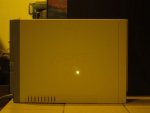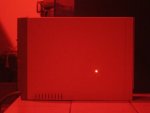SergiuM
0
- Joined
- Sep 18, 2010
- Messages
- 15
- Points
- 0
Hey guys, I would like to purchase a 1W 445nm soon, so i want to get a feel for how much goggles will cost. safety is my number one concern, so i want to get something good. I saw some Laserglow ones but what they say makes it somewhat complicated for me to choose the right one.
Heres the link: Laserglow Technologies - Handheld Lasers, Alignment Lasers and Lab / OEM Lasers
And can someone explain what "optical density" is and does? I tried searching for most of this but apparently 445nm are fairly new, so i didnt find much. And if you know of some cheaper goggles, but still good quality and, of course, safe, let me know. Thanks guys!
Heres the link: Laserglow Technologies - Handheld Lasers, Alignment Lasers and Lab / OEM Lasers
And can someone explain what "optical density" is and does? I tried searching for most of this but apparently 445nm are fairly new, so i didnt find much. And if you know of some cheaper goggles, but still good quality and, of course, safe, let me know. Thanks guys!






